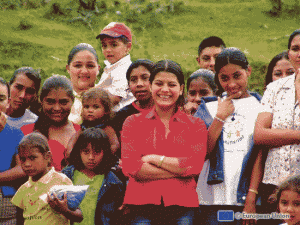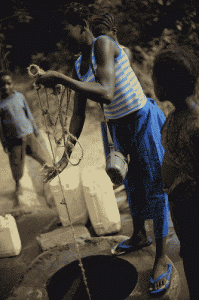Criticisms of Children’s Rights
Children faced with limitations of the law
Children are born helpless and completely dependent on adults. The law, therefore, is there to protect them, to offer them opportunities and to allow them a say in decisions which concern them. There are, however, a number of failings in the system.
Finding the balance between protection and independence
A human being unlike others
Specific rights for children exist, which are separate from human rights and could, therefore, be viewed as a sub category of rights. The distinction could be taken to mean that a child is not considered a human being and is therefore not entitled to the same protection as an adult.
Furthermore, the system often fails to find a balance between overprotection and too much freedom. For example, although children are expected to take on more and more responsibilities as they get older, it is often the parents who are held financially responsible for their child’s misdemeanours while they are under 18 years of age. The child, therefore, can be seen as more of a burden than a responsible individual.
Lastly, for some, rights don’t exist without their counterparts: responsibilities. The international rights regarding childrenin the majority suggest only moral obligations, such as respect towards parents and are therefore often seen as irrelevant.
Defining children by age
It is difficult to determine the precise age at which a child becomes an adult since each person develops at a different pace. A fixed age limit is therefore determined by opinion and can prove very inappropriate.
 However, without clearly defined rules, children are at risk of being treated in ways which, although acceptable for adults, are not suitable for children. This can include marriage, work and imprisonment. On the other hand, those children who are able to think for themselves and make their own decisions may find that their views are ignored.
However, without clearly defined rules, children are at risk of being treated in ways which, although acceptable for adults, are not suitable for children. This can include marriage, work and imprisonment. On the other hand, those children who are able to think for themselves and make their own decisions may find that their views are ignored.
Children’s rights which fix no specific age limits are therefore criticised as they leave children open to abuse in certain countries. The African Charter on the Rights and Welfare of the Child, for example, forbids the enlistment of children for armed conflict, but fails to specify the age at which this rule applies. In reality, it permits the enlistment of 11-year-old ‘adults’. The protection outlined in the text is therefore meaningless.
Some texts, however, do state age limits. But they are sometimes inappropriate because too much protective face with the maturity of a child who maybe would like to buy a house or mary someone before turning 18, for example.
The International Convention on the Rights of the Child, states in its first article that, ‘child means every human being below the age of eighteen years unless under the law applicable to the child, maturity is attained earlier.’
This age limit, however, is just as ineffective, as it still allows for children to be treated as adults too early. It would be more protective to impose a lower age limit below which one cannot be considered an adult under any circumstance. For example, it’s reasonable to imagine a minimum age limit which protects all those under the age of 16.
Universal rights?
Children’s rights as described in the Convention on the Rights of the Child are aimed at guaranteeing all children in the world the same rights.
 This idealistic western vision of children is strongly contested across the world. Different countries have different cultures and children don’t all have the same wants or needs. The western countries at the heart of the texts don’t take different practices and traditions into enough consideration. Countries whose customs differ to those of western countries are therefore little encouraged to integrate these children’s rights into their way of life as they may fear it having a negative impact on theirculture.
This idealistic western vision of children is strongly contested across the world. Different countries have different cultures and children don’t all have the same wants or needs. The western countries at the heart of the texts don’t take different practices and traditions into enough consideration. Countries whose customs differ to those of western countries are therefore little encouraged to integrate these children’s rights into their way of life as they may fear it having a negative impact on theirculture.
On a regional level, however, local differences are more integrated into the texts. They are gradually being taken into consideration, but are still all too often ignored by international organisations on a global level.
The African Charter on the Rights and Welfare of the Child, for example, integrates children into the notion of the ‘group’ and unlike the Convention on the Rights of the Child, imposes responsibilities. It states in article 31 that ‘every child shall have responsibilities towards his family and society, the State and other legally recognised communities and the international community’. The importance placed on the group, which can diminish that of the individual, reflects the recognition of customs on the African continent.
Lastly, children’s rights are sometimes criticised as being unrealistic as they don’t take into account economical, social and political differences which exist between countries. In practice, it is difficult to apply the same rights to all children in the world since they don’t live in the same conditions. It would be irrelevant, for example, to apply a right to leisure time in countries where the right to life or the right to water cannot even be enforced.
Children’s rights… and reality
Action and inaction of the state
Adherence to the texts
A lot of countries still haven’t signed or ratified international texts on the rights of children. Of those countries who have signed texts, some use jurisdiction or political means to limit their scope. This essentially makes some of the rights outlined in the texts meaningless.
The credibility of children’s rights is also jeopardised when those states who created and edited them don’t even fully respect them themselves.
Effectiveness of children’s rights
 Article 4 of the International Convention on the Rights of the Child states that member states should undertake to implement children’s rights as set out in the text. There are, however, very few countries which don’t commit significant human rights violations, including violations of children’s rights. In fact, in spite of the obligatory nature of the international law, many states still don’t consider children’s rights as anything more than moral principles.
Article 4 of the International Convention on the Rights of the Child states that member states should undertake to implement children’s rights as set out in the text. There are, however, very few countries which don’t commit significant human rights violations, including violations of children’s rights. In fact, in spite of the obligatory nature of the international law, many states still don’t consider children’s rights as anything more than moral principles.
Moreover, in order to impose an international text on a national level, laws must be vetoed and adapted to meet the rights they proclaim. This system is complex and it is often not seen as a priority. Therefore, some states, even if they have adhered to international conventions, don’t always integrate children’s rights into their internal jurisdiction for political or religious reasons…
Even when laws are adopted, institutions essential for the implementation of these rights, such as childcare, police and hospitals, etc., aren’t always available due to their high cost.
Where these institutions do exist, they are often inaccessible or ineffective due to location or financial restrictions and/or a lack of knowledge or corruption.
Children’s rights can only be effective when states put in place strategies for condemning anyone guilty of violating these rights. Yet many countries have no means of effectively condemning abuse.
Furthermore, it isn’t always possible to impose legal decisions even when they are made. The very existence of children’s rights is called in to question by the fact that they can’t be enforced and that abuses go unpunished.
International justice and children’s rights
 The problem remains that on an international level there is no authority with the power to sanction states and individuals with regard to the respect of children’s rights.
The problem remains that on an international level there is no authority with the power to sanction states and individuals with regard to the respect of children’s rights.
Associations and organisations denounce violations but are unable to improve situations without the power to impose legal judgements or sanctions.
The member states of the Convention on the Rights of the Child must produce a report on the progress they have made concerning measures imposed to enable children’s rights in their country. They are, however, only required to produce one report in the two years following adoption of the Convention and then once every five years thereafter. These reports seem imprecise and inefficient.
Although an additional optional protocol was approved in 2011 to allow individual complaints to be lodged with the Committee for the Rights of the Child, there are many obstacles which hinder its effectiveness (the state must agree to the protocol, and the complaints procedure, which is not widely publicised, is lengthy and expensive). There are other institutions in place, such as the European Court of Human Rights or the African Committee on the Rights and Welfare of the Child, but the same difficulties apply.
Sanctioning a state remains problematic and unusual and is even more difficult if the state is economically or militarily powerful.
Cases of state absence
In cases of war or an overthrow of power, the state itself isn’t always able to demand respect of children’s rights by the population. Where there is violence in a country, it can even be that children’s rights don’t apply under specific wartime law. Only the most basic rights such as the right to life remain applicable.
Lastly, stateless children, that’s to say those who have no country or refugees who have fled their country, aren’t able to count on their state of origin for protection.
The role of society
International law is often too far distanced from the realities. The fulfilment of children’s rights remains dependant on the cooperation of parents and families, but also public and private professionals and all other people on a daily basis. In fact, without them, children’s rights don’t exist.
In most countries, a child can’t lodge a complaint himself. He must be accompanied by an adult to ensure, at the very least, that his voice is heard.
Likewise, international law promotes principles of equality and non-discrimination, but remains purely theoretical. In practice, it is necessary to fight much more actively against discriminatory customs. In fact, vulnerable children such as young girls or children from ethnic minorities are more affected by children’s rights violations than others. For example, according to a report by Amnesty International in 2008, Roma children in Slovakia are systematically seen to be refused access to schools despite the fact that Slovakia has signed a number of international texts fighting this type of practice.
Therefore, in order to make children’s rights a reality, states should further develop information concerning rights and offer more help to children and their families as well as doing more to prevent violations.
Written by : Apolline Garnier Review by : Cathy Chillard Translated by : Sae hee Hanna kim Review by : Laurie Wynne |
Last update 7th august 2012 |


